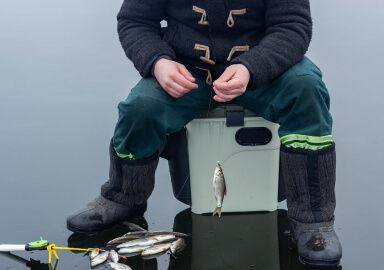Northern Pike
Sometimes called “the crocodile of northern rivers”, the northern pike pike is a long-bodied, big-mouthed predatory fish that is abundant in Europe, Asia and North America
View 51 listings
51
listings
–
price starting from
10
countries
–
to the nearest trip
Where and When?
Northern Pike, true to its name, is endemic to the Northern Hemisphere, and thrives in temperate and cool rivers and lakes. The pike prefers slow-moving waters with lots of vegetation to hide in. The current recognized angling world record comes from Greffern Lake, Germany; the fish weighed 25 kg (55 lb). The record for North America is somewhat smaller - a 46 lb fish caught in New York State. Historically, the prime time for pike fishing was in the spring: the species spawn close to the shore, are less shy than usual, and easy to trap or kill with a spear. These methods are illegal in most places these days. For a sports angler, perhaps the best time for pike fishing is the break of the fall and winter, when the pike hunts actively before the winter. For ice fishers, early winter is not a bad choice either.
About Northern Pike
Northern pike has a long, almost eel-like body, with protective coloring - usually dark green, with vertical stripes that blend its silhouette when it waits for its prey among the roots of cattails or reeds. Its big mouth and strong jaws enable the pike to catch prey that is up to half its own size. The pike is an ambush predator: it waits for its prey hidden next to a fallen tree, in the reeds, or in other suitable shelter, and catches it with a sudden attack. Pike are capable of impressive sprints, reaching high speed at the start. Pike feed on fish, frogs, insects, and smaller waterfowl; the biggest northern pike of Europe can swallow a full-grown mallard, and in fact many a waterfowl hunter has seen the duck they shot disappear in the jaws of the "Crocodile of Northern Rivers”.
How to Catch?
The most popular way of catching pike is with spinning gear, although trolling, fly-fishing, and fishing with live bait are also widespread and successful. Pike being ambush hunters, an active search of the river or lake is usually preferable to staying in one sweet spot and waiting for the fish to come to you. The spinning tackle should be strong, and the lures relatively big; a large spoon is the choice of many anglers. Pike’s preferred habitat usually abounds in fallen logs, roots, and other things that a lure may get stuck on, so carry a lot of spares. A pike is a strong fighter, but often seems slow to realise it’s been hooked; occasionally you could swear you’d caught a rock or a bunch of water vegetation, but then, just a few yards away, the fish jumps out of the water and the action begins. Northern Pike is delicious, but beset with numerous small bones.








